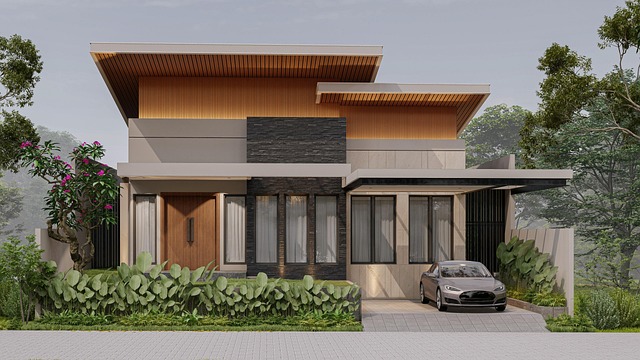In the digital age, 3D bridge structure renderings are revolutionizing infrastructure development. This technology offers a detailed, visual analysis of complex designs, enabling professionals to detect and resolve issues before construction begins. By providing hyper-realistic models with advanced lighting, textures, and environmental effects, these renderings enhance project accuracy, streamline analysis, and facilitate informed decisions for stakeholders. Case studies prove their effectiveness in achieving aesthetic, functional, and safety goals, as seen in a modern arch bridge project, showcasing the critical role of 3D renderings in successful infrastructure planning and execution.
In today’s competitive construction landscape, accurate project analysis is paramount. Among the tools revolutionizing this process are 3D structural renderings, offering a vivid and precise representation of designs. This article explores the transformative power of these visualizations, from their creation through to their profound impact on decision-making. We delve into case studies showcasing successful bridge structure renderings, highlighting how they enhance safety, efficiency, and cost-effectiveness in complex engineering projects.
Understanding the Power of 3D Structural Renderings
In today’s digital age, 3D structural renderings have emerged as a powerful tool for architects, engineers, and project stakeholders. By creating detailed, visual representations of structures, these renderings offer an unprecedented level of clarity and understanding. Bridge structure rendering, for instance, allows professionals to scrutinize designs, identify potential issues, and make informed decisions before construction begins. This process enhances accuracy, streamlines project analysis, and ultimately leads to better outcomes.
The benefits are vast: from visualizing complex geometric forms to simulating lighting and material textures, 3D renderings provide a comprehensive view of the final product. For bridge projects, this means assessing structural integrity, evaluating aesthetic appeal, and predicting how the structure will interact with its surrounding environment. This technology bridges the gap between concept and reality, ensuring that every detail is considered before turning the first piece of concrete.
The Process: From Design to Visualization
The process of creating 3D structural renderings for project analysis is a meticulous journey, transforming initial design concepts into vivid visual representations. It begins with gathering all necessary design data and specifications, including engineering drawings and technical details of the bridge structure. This foundational information sets the stage for the next critical step: digital modeling.
Using specialized software, architects and engineers meticulously construct a 3D model, layer by layer, ensuring precise alignment and proportions. Advanced rendering techniques are then applied to add realism, incorporating materials, textures, and lighting effects. The end result is a hyper-realistic bridge structure rendering that allows stakeholders to analyze the project’s aesthetic appeal and structural integrity from every angle, fostering informed decision-making throughout the design and construction phases.
Benefits for Project Analysis and Decision-Making
3D structural renderings offer a powerful tool for project analysis, providing an immersive and accurate visualization of proposed designs. This technology bridges the gap between abstract concepts and physical reality, allowing stakeholders to gain a deeper understanding of a structure’s aesthetics and functionality. By creating photorealistic bridge structure renderings, teams can identify potential issues early in the design process, saving time and resources.
During decision-making, these detailed visualizations enable clients and architects to communicate effectively. They facilitate informed choices by showcasing different options, materials, and layouts, ultimately leading to more satisfying outcomes. With 3D renderings, project stakeholders can confidently navigate the complexities of structural design, ensuring a solid foundation for successful construction.
Case Studies: Successful Bridge Structure Renderings
Successful bridge structure renderings have been instrumental in revolutionizing project analysis and visualization. Case studies abound where 3D structural models have played pivotal roles in accurate assessments and efficient design iterations. For instance, a recent project involved constructing a modern arch bridge over a scenic river valley. The intricate nature of the design posed challenges for stakeholders, including engineers and urban planners. However, detailed bridge structure renderings enabled them to navigate these complexities effectively.
These visualizations provided a comprehensive, three-dimensional view of the proposed structure, allowing for more precise calculations of structural integrity and load-bearing capacities. This level of detail facilitated informed decision-making processes, ensuring the final design met safety standards while harmoniously integrating with the surrounding landscape. The project’s success underscores the value of bridge structure renderings in bringing together aesthetics, functionality, and safety in complex infrastructure projects.
3D structural renderings have proven to be indispensable tools in the engineering and construction industry, particularly for intricate projects like bridge structures. By visually translating complex designs into accurate 3D models, these renderings enable thorough project analysis, facilitate informed decision-making, and ultimately lead to successful outcomes. As demonstrated through various case studies, including impressive bridge structure renderings, embracing this technology is not just an option but a strategic necessity for modern professionals seeking precision and efficiency in their work.
